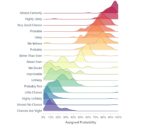
by tyler garrett | May 23, 2025 | Data Visual
In today’s data-driven marketplace, merely visualizing data is no longer good enough. Decision-makers are increasingly demanding actionable insights and clarity. Leveraging statistical context within your visualizations is key to not just interpreting data, but also confidently utilizing it for strategic action. As businesses become more sophisticated in analytics, embedded statistical context provides executives and stakeholders with true transparency and confidence when making decisions. This empowers organizations to better anticipate market shifts, identify opportunities, and manage risk effectively. The power of visual data storytelling combined with robust statistical context doesn’t just demonstrate what happened—it explains why it matters and guides strategic action.
The Importance of Integrating Statistical Context
When organizations set out to visualize data, it’s easy to become captivated by aesthetics and formatting, but visual appeal alone won’t translate to actionable decision-making. The real power lies in embedding statistical context—clearly communicating the significance, reliability, and potential actions supported by the data presented. Without proper statistical context, data visualizations can inadvertently mislead decision-makers into incorrect interpretations, ultimately leading to suboptimal business choices.
Incorporating statistical context into visualizations radically elevates their utility. Statistical context gives stakeholders valuable insights such as understanding variances, interpreting distribution patterns, spotting outliers, and diagnosing underlying causes of trends or behaviors. Decision-makers better comprehend the potential impact of decisions when they see confidence intervals, regression lines, and predictive analytics—elements far superior to simple descriptive visuals.
Embedding statistical context can also ensure better decision-making by fostering confidence, clarity, and accuracy. For instance, when visualizing housing affordability data, integrating predictive trends or regression indicators can bolster strategic planning for addressing community challenges similar to those outlined in our insights on the role of data analytics in addressing Austin’s housing affordability crisis. Clear statistical context makes complex problems manageable, allowing stakeholders to pinpoint precise areas for intervention and optimization.
Identifying Key Statistical Components to Embed
Statistical context in data visualization isn’t a vague enhancement—it’s a targeted strategy that integrates specific statistical components relevant to organizational goals. Core elements worth including are descriptive statistics, inferential methods like confidence intervals, predictive analytics components, and visual cues for outlier detection or variance analysis.
Descriptive statistics provide foundational insights such as averages, medians, variability, and distributions. Offering these basic metrics visually ensures decision-makers understand the data landscape clearly before proceeding further. Advanced inferential statistics such as hypothesis testing and confidence intervals further refine visualization outcomes, assisting leaders in assessing the trustworthiness of trends and drawing conclusions reliably.
For instance, if visualizing sales or marketing outcomes, regression and correlation analysis could provide valuable insights into drivers of revenue increases or decreases. Similarly, predictive analytics embedded within visuals can inform proactive business strategies. Companies exploring multi-dimensional insights can incorporate advanced analytics such as Holographic Data Modeling for Multi-Perspective Analytics to embed deeper statistical context, shedding new light on underlying relationships hidden in data.
Enhancing Visibility into Data Connections
Establishing statistical context also involves clearly visualizing relationships between disparate data points and attributes—highlighting patterns, correlations, and interactions crucial for informed strategies. Enhanced visibility into these connections helps decision-makers quickly grasp complex relationships and interdependencies in their data.
Effective statistical data visualization speaks a universal language across different roles within an organization, turning raw data into actionable insight quickly. Tools like sparklines—a concise, impactful graphical representation—can show data connections at a glance. Our guide on how to make a sparkline chart in Tableau Desktop demonstrates just how easy yet powerful this type of visualization can be in delivering robust statistical context succinctly.
Another useful approach is embedding statistical context through correlation heatmaps, network graphs, or customized dashboards, explicitly demonstrating links and causative relationships between variables like marketing spend versus customer retention, or operational adjustments versus improved efficiency. As your data complexity grows, leveraging such connective insights through intelligent visualizations reduces interpretability friction and accelerates strategic decision-making.
Utilizing Advanced Data Integration and Fusion Techniques
In an era dominated by complex data landscapes, organizations must effectively integrate datasets from diverse modalities. By leveraging multi-modal data fusion strategies, businesses can embed enriched statistical contexts within visualizations. These advanced data integration approaches assemble disparate data sources to offer a holistic, statistically informed view of organizational operations or customer behaviors.
Embedding statistical context effectively demands data accuracy, strategic integration, and analytical maturity. Techniques like Data Fusion strategically harmonize various datasets, augmenting visual analytics with comprehensive predictive capabilities. A robust data architecture also establishes necessary connections, enabling smoother embedding of context. Employing microservices-based data foundations, as detailed in our overview of data architecture patterns for microservices, can drastically simplify statistically enhanced visualizations and data landscapes for organizations shifting toward agile, scalable analytics environments.
In corporate environments, embedding statistically informed visualizations also means replacing expensive, outdated warehousing processes with modernized, open-source alternatives. Utilizing services and strategies like Transitioning from expensive drag-and-drop data warehousing to open-source Node.js allows businesses to embed accurate, timely statistical context cost-effectively—boosting speed-to-insight, reducing complexity, and improving investment efficiency.
Practical Implementation for Sustainable Success
Embedding statistical context in visualizations is more than a tech capability—it’s a continuous, iterative process toward improved data literacy, cultural adoption, and sustained decision-making efficacy. Organizations investing in these enhanced analytics often face a critical decision: “Should we pursue a grassroots or enterprise approach?” Understanding the tradeoffs between engaging a nimble, innovative consultancy versus traditional large-scale consulting firms is crucial. Our perspective on working with a grassroots consultancy vs an enterprise consultancy sheds helpful context for selecting the right analytics partner to implement sustainable, statistically visualized insights.
Practical implementation involves carefully staged adoption of best practices across data modeling, engineering pipelines, visualization techniques, and analytical maturity. Comprehensive training and organizational alignment accelerate practical adoption. Organizations at an earlier stage can refer to our resources, such as a beginner’s guide to data modeling for analytics, which helps build a robust understanding to maintain these sophisticated visualization paradigms sustainably.
Learning from proven successes can ensure smoother implementation. By examining case studies of successful ETL implementations in various industries, organizations identify proven methodologies, accelerate successful statistical visualization integration, and optimize their analytics success reliably across verticals and use cases.
Overcoming Visualization and Analytics Challenges
Successfully embedding statistical context isn’t without challenges. Organizations may encounter data size limitations, integration roadblocks, or software ecosystem constraints. For example, issues such as the ones outlined in our solution article regarding connecting to large Google Sheets datasets highlight the need for analytics teams to proactively solve and mitigate these limitations.
Proactively overcoming such hurdles requires agile methodologies customized to organizational needs, a strategic approach toward integrating analytics technologies, and collaborative exploration of potential challenges and pitfalls. Organizations may need outside consulting expertise, such as our MySQL consulting services, to leverage industry best practices tailored to peak performance and maximum reliability.
Ultimately, overcoming technical, cultural, and operational challenges to embed richer statistical context pays off exponentially. Organizations harness powerful visually enhanced statistical insights, enabling stakeholders to confidently drive innovation, foster agility, and effectively mitigate business risks in a competitive market environment.
Thank you for your support, follow DEV3LOPCOM, LLC on LinkedIn and YouTube.

by tyler garrett | May 23, 2025 | Data Visual
In the fast-evolving landscape of data analytics, decision-makers often face challenges in clearly understanding complex data distributions across different categories. Powerful visualizations like ridgeline plots, also known as density ridge plots or Joyplots, have emerged as indispensable tools for analysts aiming to break down intricate data structures visually. They not only provide immediate insights into the distribution of values, variability, and outliers over numerous categories, but also enable intuitive comparisons. In this era where informed decision-making is crucial across every business vertical, embracing advanced visualization techniques such as ridgeline plots effectively transforms overwhelming data chaos into actionable clarity and insights.
Understanding Ridgeline Plots
Ridgeline plots are data visualizations designed to display multiple distributions simultaneously for comparative analysis. Imagine several density plots layered vertically, each shifted slightly upwards to reveal its shape and spread clearly, without overlapping heavily. Each “ridge,” or curve, represents the distribution of data points within one category, facilitating effortless comparison across different categories at a glance. The name ‘ridgeline’ comes from the likeness to mountain ridges viewed from afar, offering an intuitive metaphor for understanding complex datasets. Unlike traditional histograms or box plots that might obscure valuable trends by compressing information, ridgeline plots offer greater clarity and insight into how data behaves differently across groups or categories.
Consider, for example, an analytics consultant team at Dev3lop leveraging ridgeline plots in their advanced analytics consulting services. Such visualizations quickly highlight variations in customer satisfaction among product categories, seasonal changes in sales performance across branches, or demographic variables related to user behavior. Companies in competitive markets such as Texas, known for its dynamic business landscape, benefit significantly by embracing modern analytics solutions. By employing ridgeline plots strategically, leaders can swiftly identify unusual patterns, pinpoint areas needing attention, and streamline strategic decisions confidently.
Benefits of Using Ridgeline Plots
Improved Readability and Clarity
The primary advantage of ridgeline plots lies in their intuitive readability. Compared to traditional visualizations like overlapping density or stacked histograms, ridgelines significantly reduce cognitive overhead by clearly separating different categories vertically, preserving detail without clutter. Visually clear presentations are essential, especially when communicating analytical findings to diverse stakeholders who may not be deeply versed in statistical concepts. This aligns perfectly with our article covering best practices for data visualization.
Efficient Detection of Patterns and Outliers
Ridgeline plots allow decision-makers to immediately detect subtle shifts, unusual spikes, or outlier distributions across multiple categories. This quick pattern matching directly complements advanced strategies discussed in our resource on mastering pattern matching in SQL. For instance, when applied to customer satisfaction scores, ridgeline visualizations instantly highlight customer segments experiencing lower satisfaction, enabling fast, targeted interventions to improve outcomes. These insights can dramatically boost efficiency and lead to tangible improvements in customer engagement strategies.
Optimal for Large Numbers of Categories
While traditional visualization methods may become unwieldy and ineffective when dealing with many categories, ridgeline plots remain consistently clear and efficient. When analyzing large datasets with complex category breakdowns, such as retail transaction data or healthcare patient cohorts, ridgelines outperform alternatives by preserving visibility without sacrificing readability. This characteristic is crucial in today’s data-rich environments, covered in detail within our recent post on the increasing importance of data analysis in 2023, illustrating how high-dimensional analysis helps unlock strategic insights.
Use Cases for Implementing Ridgeline Plots Effectively
Organizations that embrace ridgeline plots can quickly reap significant benefits across multiple business functions. Some compelling real-world use cases include:
Customer Satisfaction and User Experience Analytics
Companies aiming to distinguish their brands through stellar customer experiences heavily invest in analyzing feedback distributions across user segments or categories. Ridgeline plots offer a direct visualization method where marketing or CX teams effortlessly identify areas needing immediate improvement or showing powerful positive trends. Given the growing importance of ethical data analysis, it’s essential organizations follow responsible practices from collection onward. Our coverage of ethical data collection and analysis practices offers strategic guidance toward applying advanced analytics responsibly.
Financial and Sales Data Analysis
In financial analytics, ridgeline plots can effectively depict revenue fluctuations, cost distributions, or profitability differences among product lines or regions. Decision-makers can swiftly discern patterns and deviations from expected financial performance, improving forecasting accuracy and profitability. Complementary analytics insights can be found in our advanced resource, ideas for using data analytics in regional markets, offering practical approaches specifically tailored to improving market understanding in competitive environments.
Human Resource Talent Management
HR teams frequently analyze data around employee engagement, productivity metrics, or skill gap distributions. Ridgeline plots precisely visualize variations across departments, job levels, or tenure groups. Managers utilize these visual insights to identify impactful opportunities in employee development or retention, leading to informed talent management strategies. Visualization clarity offered by ridgelines fits comfortably within a structured analytics framework, aligning well with our discussion of composable data analytics frameworks.
Integrating Ridgeline Plots into Your Data Strategy
Adopting advanced visualization tools such as ridgeline plots requires thorough integration within your organization’s existing data architecture and analytical processes. Business leaders seeking to leverage modern visualization techniques strategically should first ensure robust data architecture frameworks that effectively support analytics operations. Our insightful article, turning business chaos into order using data architecture, can guide you on creating foundational frameworks suited to advanced visualization.
Similarly, comprehensive data observability becomes critical to ensuring reliable and timely inputs for visualizations. A holistic monitoring system, like an observability mesh, ensures data quality and integrity, directly influencing analytical accuracy and confidence in insights generated by ridgeline plots. In this integration process, engaging seasoned analytical consulting services can greatly streamline your transition toward effective adoption of advanced visualization techniques.
The Strategic Value of Ridgeline Plots in Analytics Innovation
Cultivating analytics innovation and maturity across business functions includes thoughtfully employing state-of-the-art visualization tools. Ridgeline plots exemplify analytics innovation by providing clear comparisons across categories with remarkable ease, enabling quicker decisions and actionable insights. Furthermore, harnessing enhanced visual interpretation of data distributions directly contributes to overall analytics maturity, positioning organizations competitively in data-driven marketplaces. Incorporating ridgeline plots strategically also supports the successful implementation of advanced analytical technologies, including AI-driven methodologies, reinforced comprehensively in our resource about core principles of AI agents.
Ultimately, leveraging cutting-edge visualization techniques like ridgeline plots ensures your organization seamlessly transforms complex data into consistent, impactful, and comprehensible insights, facilitating rapid and confident strategic decision-making.
Conclusion: Elevating Your Analytics Capability with Ridgeline Plots
Ridgeline plots stand out as powerful visualization tools for businesses committed to achieving impactful analytics outcomes. By effectively showcasing multiple distribution comparisons without cognitive clutter, they enable leaders to understand data clearly and swiftly, boosting both clarity and decision-making agility. In today’s competitive markets, embracing visual analytics innovations positions forward-thinking businesses advantageously in their analytical and strategic endeavors, driving continued success.
Ready to harness the full potential of visual analytics within your data strategy? Partner with experienced analytics professionals passionate about turning complex data structures into actionable clarity. Discover how our experts can further enhance your analytics potential and decision strategies through effective use of ridgeline plots and more—reach out today.
Thank you for your support, follow DEV3LOPCOM, LLC on LinkedIn and YouTube.

by tyler garrett | May 23, 2025 | Data Visual
In today’s data-driven era, detecting anomalies and outliers isn’t merely a statistical exercise—it’s a strategic imperative. Organizations lose valuable opportunities and revenue by ignoring underlying data anomalies. Visual analytics provides an intuitive way to uncover critical insights hidden within seemingly ordinary datasets. Instead of combing through rows of numbers or spreadsheet tabs, visual analytics allows business leaders and analysts alike to quickly pinpoint deviations, spot fraudulent activities, hone in on performance nuances, and optimize decision-making. Imagine transforming tedious data interpretation into interactive visual storytelling. This is precisely why visual analytics is becoming a cornerstone in when and how executives approach data exploration, making complex data patterns easily understandable. In short, visual analytics doesn’t just illuminate data—it empowers organizations to innovate proactively and become more resilient to disruptions.
Understanding the Role of Visual Analytics in Outlier Detection
Outliers, in statistical terms, are data points that deviate significantly from other observations. Identifying and properly interpreting these anomalies can profoundly affect business performance. Outliers can signal external changes such as shifts in consumer behavior, or they can hint toward critical internal issues that might otherwise remain hidden. Visual analytics leverages visual representations like charts, dashboards, and interactive graphics, enabling organizations to detect and explore outliers rapidly. By visually presenting data through intuitive designs, analysts not only simplify complex patterns but also contextualize anomalies for better actionable insights. For example, techniques like sparkline charting in Tableau Desktop allow stakeholders to identify unusual trends quickly at a glance, instead of poring over spreadsheet data.
Visual analytics goes beyond traditional analytics tools by allowing users to interact richly with data, slicing and dicing within visualizations. Highly interactive visual platforms put users in an exploration-driven mode, dynamically surfacing patterns and anomalies that might have been ignored or mishandled via conventional reporting methods. This empowers decision-makers, technologists, data scientists, and everyday business users by enabling better root-cause analysis, increased visibility, and enhanced productivity, thereby directly impacting the organizational bottom line.
Visualization Methods for Effective Outlier Exploration
Different scenarios call for varying methods of visual analytics. Scatter plots, box plots, histograms, and heatmaps efficiently identify and clarify data anomalies. Understanding the best use-case for each visualization is essential for effectively harnessing outlier analysis.
For example, scatter plots incredibly pinpoint anomalies within two-dimensional datasets. However, when dealing with multi-dimensional datasets, scatter plots become complex—posing substantial exploration drawbacks. This complexity has encouraged innovative methods like quaternion-based visualizations, harnessing advanced mathematical approaches to simplify complicated data exploration tasks. Such methods notably allow analysts to quickly identify multi-dimensional data outliers without descending into complexity overload.
Box plots and violin plots enable executives to swiftly detect distribution anomalies, offering quick and easy-to-understand breakdowns of analytics. Meanwhile, heatmaps provide robust graphical representations for identifying clusters or unusual activity within large datasets. Employing such visual analytics strategies enables stakeholders to swiftly translate data anomalies into actionable insights, potentially saving significant organizational resources.
Maximizing Visual Patterns Using Best Practices
While visualization methods are powerful, it’s important that organizations implement these methods strategically. Businesses should follow data visualization best practices to achieve optimal clarity and communication in anomaly detection. Key best practices include limiting unnecessary complexity, maintaining consistency in design elements, and effectively choosing visualization types that translate clearly intended messages.
Visualization creations should be geared toward the end-user’s level of expertise, ensuring clarity and ease in interpreting results. Advanced visuals should balance complexity with simplicity, providing just enough context for users to understand anomalies easily. A visual analytics strategy grounded in well-known visualization principles ensures businesses transform complex analytical findings into confident decisions.
Enhancing Decision-Making Through Advanced Visual Analytics Techniques
Advanced visual analytics builds upon traditional visualization methods, taking users deeper into the data. Interactive dashboards, real-time analytics, predictive visual analytics and augmented analytics could provide significant competitive advantages. Real-time visual analytics empowers organizations to identify emerging outlier trends instantly, enabling proactive decision-making that can literally shift business outcomes positively.
Predictive visual analytics integrates machine learning techniques into visual platforms, allowing analysts to foresee not only historical or present outliers but potential future anomalies. Furthermore, augmented analytic techniques incorporated within visuals allow executives and analysts to leverage artificial intelligence and natural language processing technologies, significantly enhancing one’s ability to systematically pinpoint hidden patterns.
For complex business environments such as enterprise-wide data warehousing, incorporating visual analytics can be transformative. Executives unaware of how visual analytics fit into their data strategies can gain valuable insights through our detailed guide on data warehousing considerations, ensuring informed institutional planning and efficient management solutions.
Ontology-Driven Approaches and Visual Analytics
Leveraging advanced semantic approaches like ontology-driven analytics, visual analytics expertise moves from descriptive insights towards prescriptive analytics – bridging knowledge gaps and creating interconnected, enterprise-wide data strategies. Using ontology-driven data integration, analysts can map data relationships more effectively across organizational silos, revealing anomalies distinctly rooted in enterprise regulations, operational policies, or market behaviors.
Ontology-driven visualization enables a more seamless exploration of related anomalies at different data granularities, further enriching how organizations interpret complex anomaly-related data instances. This strategic approach consolidates complex organizational datasets, allowing executives quick and comprehensive visualization-based anomaly exploration.
Practical Applications: Real-World Use-Cases of Visual Analytics for Outlier Detection
Industries across the spectrum are benefitting significantly through implementation of visual analytics tools. In sectors like finance, visual analytics supports fast identification of fraudulent activities and risk events. Heatmaps and scatter plots are frequently employed to identify abnormal credit transactions, audit manipulation, and insider trading.
In retail and e-commerce, visual analytics assists organizations in identifying sudden shifts in consumer behavior, allowing marketing teams to adjust strategies proactively. A detailed breakdown on methods such as visualization within analytics can be found through our guide on ways analytics and data engineering improve customer experience. Businesses can leverage visual analytics to rapidly explore customer behavioral outliers in purchasing patterns, ensuring relevant experiences for users at scale.
Manufacturing employs visual analytics to instantly detect equipment anomalies and anomalies in manufacturing output trends, overall reducing downtime by fully analyzing and leveraging these data trends in real-time visual dashboards. Visual analytics provides broad universal impacts, translating not just into improved profitability but enabling constant shifts towards innovation across industries.
The Role of Expert Consulting: Unlocking the Power of Visual Analytics
To harness the full potentials of visual analytics, organizations often require experienced guidance. Specialized consulting services, such as experts in data warehouses and visual analytics platforms like AWS Redshift, ensure your organization quickly adapts, accurately implements, and maximizes strategic outcomes in your technology investments. Leveraging expert assistance saves organizations time, reduces cost through effective utilization, and provides laser-focused visibility across business processes.
Engaging consulting services like Amazon Redshift experts provides customized solutions tailored to your enterprise landscape. Consultants grant best-practices advice and ensure smooth deployment, expert-driven training initiatives, and extensive experience in diverse real-world business scenarios. Ultimately, professional consulting expertise allows leaders and teams to efficiently adopt visual analytics tools, integrating powerful insights with strategic execution, driving growth and innovation across every facet of business operations.
Conclusion: Driving Innovation Through Visual Analytics
Visual analytics is undeniably essential for modern organizations committed to smarter operations, enhanced efficiency, and strategic decision-making. Whether the objective is outlier detection, fraud prevention, predictive analytics, operational investigations, or customer insight enhancement, smart tools paired with dynamic visual analytics approaches consistently reveal anomalies and actionable insights that enable impactful business transformation.
To truly elevate analytics initiatives, stakeholders should pursue consistent investment in strategic partnerships, visualization mentoring, innovation strategies, and understanding advanced analytics to further solidify potential capabilities. Visual analytics, when deployed strategically and guided by dedicated expert partners, forms a bedrock for widespread innovation and sustainable growth.
Tags: Visual Analytics, Outlier Detection, Data Visualization, Data Strategy, Analytics Consulting, Business Intelligence
Thank you for your support, follow DEV3LOPCOM, LLC on LinkedIn and YouTube.

by tyler garrett | May 23, 2025 | Data Visual
In our rapidly digitizing world, businesses are gathering data from myriad sources at multiple scales and resolutions. However, effectively interpreting this diverse data landscape can seem daunting—especially without the right tools to visualize across varying levels of granularity and resolution. Multi-scale visualization refers to the dynamic and adaptive presentation of data across differing resolutions, empowering users with comprehensive insights from macro-level trends to micro-level details. At Dev3lop, we pride ourselves on harnessing innovation and deep analytical expertise, delivering strategic guidance to decision-makers by leveraging cutting-edge visualization techniques alongside robust analytical frameworks. This blog post explores key insights, methods, technologies, and best practices to help your organization achieve informed cross-resolution data analysis effectively—ultimately driving improved decision-making and competitive advantage in today’s data-driven market ecosystem.
Why Multi-Scale Visualization is Crucial for Modern Businesses
The sheer volume and diversity of data available today presents a paradox: organizations often find themselves drowning in information but starving for clarity. This challenge is even more prominent when analyzing data collected at different granularities—from high-level macro perspectives (e.g., market trends or annual financial metrics) to detailed transaction-level data. Multi-scale visualization addresses this complexity head-on by delivering coherent and scalable visuals that enable seamless exploration across multiple layers of data resolution and detail.
By bridging these multiple scales effectively, businesses gain a holistic understanding, allowing them to zoom effortlessly from strategic-level dashboards down to granular, individual-event details. For instance, executives can use macro-level dashboards to identify emerging trends or anomalies and then seamlessly dig into underlying data streams through interactive Tableau Server visualizations to pinpoint specific issues driving those patterns. This flexibility reduces analysis time dramatically, accelerates problem diagnosis, and enhances decision accuracy.
Moreover, organizations increasingly depend on real-time or near-real-time data streams. Incorporating robust real-time input validation strategies into a multi-scale visualization strategy ensures accuracy at every resolution layer. Ultimately, multi-scale visualization becomes far more than a nice-to-have—it’s a vital strategic capability for businesses seeking to stay agile in today’s multi-dimensional data landscapes.
Building Effective Cross-Resolution Visualizations
Choosing the Right Granularity Levels
The first step in implementing effective multi-scale visualization techniques involves identifying the appropriate granularity levels for your data analysis efforts. Analyze your stakeholders’ data consumption patterns and decision-making workflows—identifying the resolutions at which visual analysis will deliver actionable insights. Selecting effectively means balancing between overly granular visualizations, which could drown decision-makers in irrelevant details, and overly aggregated presentations, sacrificing meaningful insights.
Integrate advanced analytical methodologies like holographic data modeling for multi-perspective analytics to enable smoother transitions between different granularity levels. Leveraging such models allows visualization tools to dynamically adjust detail granularity based on user interaction, unlocking richer and more impactful insights. This capability is especially influential during deep dives necessary to troubleshoot problems or validate hypotheses.
The granularity determination process must always align with strategic business goals. For example, inventory managers seeking cost efficiencies benefit greatly from visual tools designed specifically around operational efficiencies and demand-pattern granularity. A multi-scale visualization approach integrated into efficient storage space utilization techniques can lead immediately to actionable insights and direct operational improvements.
Leveraging Interactive Visualization Techniques
Interactivity is key in cross-resolution visualization efforts. Static visuals limit exploration paths, while interactive dashboards empower stakeholders to discover insights proactively. Modern interactive visualization platforms like Tableau offer powerful zooming, filtering, drill-down and roll-up functionalities, maximizing the values derived from multi-scale data assets. With interactive interfaces, stakeholders can smoothly shift contexts—from broad strategic overviews into highly specific subsets of data—without losing analytical momentum and precision.
Interactive tools not only aid human analysts but also facilitate communication across different roles within the organization, enabling smoother collaboration. Teams driven by dynamic visualization platforms find common ground more quickly, align efforts effectively, and streamline their approach toward data-informed strategic action. Whether stakeholders need high-level trends around customer behaviors or immediate granular detail about inventory resilience, adopting interactive visualization principles significantly enhances data-led decision-making agility and confidence.
Scalable Architectures Supporting Multi-Resolution Visualization
Adopting ZeroETL Architectures for Real-Time Insights
Support for multi-scale visualizations hinges critically on scalable architectures robust enough to handle real-time analytics. Traditional Extract, Transform, Load (ETL) processes usually create latency challenges when visualizing data streams. The adoption of innovative ZeroETL architectures revolutionizes this conventional approach by empowering organizations to realize high-speed analysis environments without incurring extra data movement and transactional delays. This scalability ensures continuous and instantaneous visualization of accurate, high-resolution data across multiple layers of aggregation.
Organizations guided by technical strategists like our seasoned data analytics teams at Dev3lop effectively integrate ZeroETL infrastructures into cross-resolution visualizations, enhancing visualizations derived from varied data sources, including IoT sensors, point-of-sale transactional systems, and web-based real-time platforms. By removing data movement complications, ZeroETL empowers enterprises to visualize macro and micro data simultaneously, without sacrificing agility or accuracy.
Harnessing Edge Analytics and Ephemeral Computing
When visualizations require real-time responsiveness across diverse geographies and substantial computational demands, it’s essential to explore advanced architecture paradigms such as edge analytics mesh architectures alongside innovative implementation of ephemeral computing for burst analytics workloads. Utilizing edge analytics moves computational tasks closer to where data originates, significantly reducing latency issues that typically impede cross-resolution visualization workflows.
Ephemeral cloud computing can dynamically allocate resources for timely data analysis, ensuring scalability and cost-effectiveness. Leveraging ephemeral computing processes allows organizations to rapidly scale up visualization resources during peak demand and scale back efficiently, thereby optimizing costs. Combining these modern computing paradigms amplifies the power of multi-scale visualization solutions, delivering faster downloads, quicker response times, and smoother user experiences at all levels of resolution analysis.
Utilizing Advanced Data Infrastructure for Robust Visualization
Powerful multi-scale visualization demands equally sophisticated data infrastructures. Unifying high-performance databases such as PostgreSQL powers visualizations capable of supporting cross-resolution operations effectively. Our expert team offers specialized PostgreSQL consulting services tailored specifically towards optimizing database performance and reliability, crucial for fields such as real-time analytics, inventory forecasting, and multi-perspective analytics.
Implementing cutting-edge visualization tools and maintaining agile, scalable infrastructure facilitates seamless transitions and rapid iterations across different resolution levels. Partnering with experienced technology consultants to develop and optimize advanced PostgreSQL data infrastructure positions your visualization efforts firmly at the forefront in delivering insightful multi-scale business intelligence. Achieving strong backend performance and reliability drives proactive decision-making while dramatically reducing reports, dashboards, or queries that underperform due to inefficient database management.
Unlocking Business Growth Through Cross-Resolution Analytics
The strategic capacity to visualize data at different scales significantly enhances organizations’ capabilities to capture previously hidden insights, respond quicker to market opportunities, and build long-term competitive advantages. From strategic decisions down to operational efficiencies, data analytics coupled with powerful multi-scale visualization tools deliver tangible bottom-line benefits, reshaping approaches to problem-solving, risk mitigation, and digital innovation.
Businesses investing in multi-scale visualization eliminate information fragmentation, accelerate analytical workflows, and optimize operational efficiency across the organization. Approaches like holographic modeling, ZeroETL architectures, interactive dashboards powered by Tableau Server, edge analytics, ephemeral computing and PostgreSQL optimization collectively forge powerful visualization pipelines delivering accuracy, speed, and strategic impact.
The outcome of embracing cross-resolution visualization practices is clear: sharper awareness, increased agility, and better-informed strategic and tactical decisions. Organizations making decisive investments today in multi-scale visualization and analytics can confidently expect a trajectory of growth and leadership in tomorrow’s data-driven marketplace.
Tags: Multi-Scale Visualization, Cross-Resolution Analysis, Real-Time Analytics, Data Visualization Strategy, Interactive Dashboards, Data-Driven Decision Making
Thank you for your support, follow DEV3LOPCOM, LLC on LinkedIn and YouTube.

by tyler garrett | May 23, 2025 | Data Visual
In today’s data-driven world, classification algorithms play a pivotal role in the way companies extract insights and deliver value to stakeholders. Yet, one persistent hurdle these algorithms often face is class imbalance, a situation in which one or more classes significantly outnumber others in the dataset. For strategic decision-makers, recognizing, visualizing, and managing these imbalances is crucial to ensure accurate modeling and meaningful insights. As data strategists and analytics experts, we’ve seen firsthand how using robust visualization techniques can empower executives and data teams alike, improving communication, revealing hidden biases, and driving informed actions. In this guide, we’ll shed light on the significance of visualization methods for imbalanced classification datasets, providing strategies and tools that we actively utilize with our clients during proof-of-concept development and strategic analytics transformation work.
Understanding the Challenge of Imbalanced Class Distributions
In real-world datasets, imbalanced class distributions are incredibly common yet notoriously challenging to manage. This occurs when your dataset contains significantly more examples of one class, such as common routine transactions, versus far fewer instances of another class, like fraud detections. Such imbalances pose complexities in predictive modeling because conventional algorithms inherently lean toward predicting the majority class, trading accuracy for predictive power related to less frequent but possibly more impactful minority cases. Consequently, businesses struggling with imbalanced data often miss opportunities, leaving high-value insights undiscovered and untapped.
As experienced technology strategists working closely with enterprises across industries, we’ve witnessed firsthand how effectively addressing class imbalance can lead to significant competitive advantages. Whether you’re measuring brand sentiment or conducting advanced propensity modeling, ignoring imbalance can inadvertently skew results, compromising strategic decisions and accurate forecasting. Properly visualizing imbalanced classes can quickly highlight the magnitude of the imbalance and serve as a foundational blueprint before initiating further modeling efforts. Beyond simple exploration, visualizations directly inform your algorithmic choices and help adjust your data science team’s approaches to better represent minority classes, enhancing overall model performance and trustworthiness.
Key Visualization Techniques for Recognizing Imbalanced Classes
Bar Charts and Pie Charts: Visualizing Class Proportions Clearly
Simplicity often speaks volumes, particularly when initially exploring data distributions. Classic approaches like bar charts and pie charts excel at clearly illustrating significant class disproportions. These visuals swiftly express relative class sizes and spotlight minority class subsets that may demand special attention or advanced modeling techniques. Used effectively, they’re invaluable tools to communicate insights quickly with less technical colleagues or senior executives, laying groundwork for more detailed exploration.
For instance, executives exploring customer complaints or marketing engagements often rely on straightforward graphical representations to grasp data distributions quickly before delving deeper. Part of our standard approach at Dev3lop involves embedding such visualizations when assisting our clients in designing their data strategies or conceptualizing strategic analytics solutions. Integrating straightforward visuals during our initial consultations is also a crucial step in articulating potential biases and patterns early, allowing teams to pivot smoothly towards deeper methodological adjustments or exploratory inquiries.
Histograms: Digging Deeper into Class-Specific Distributions
While bar charts reveal class counts easily, histograms allow technologists and strategic leaders to explore the distribution of underlying variables within each class. This deeper understanding enables stakeholders to uncover subtle yet potentially influential patterns missed by purely numeric assessment or simplistic visuals. Exploring data through well-crafted histograms—including overlapping histograms—can illustrate clearly discernible traits that differentiate classes, helping organizations make more informed decisions, optimize algorithms intelligently, and provide practical support for strategic initiatives.
For example, in a fraud detection dataset, histograms highlighting transaction amounts across legitimate transactions and fraud cases may illuminate how these patterns diverge and help data teams enhance analytical approaches. Whether your challenge concerns fraud analytics or customer analysis, histograms can ensure a better comprehension of imbalanced features and guide decision-makers in their strategy aptly. Ultimately, our goal in employing these visualizations is providing clear signals regarding where class disparities reside in complex datasets, thus directly contributing to better-optimized analytical workflows.
Boxplots and Violin Plots: Revealing Insights into Minority Classes
Boxplots and violin plots serve as highly powerful tools to diagnose imbalanced data in detail, particularly when detecting anomalies or differentiating characteristics hidden behind aggregated summary statistics. Both techniques provide prompts toward identifying distorted or relevant features impacting particular classes disproportionately, essential for smarter analytics execution and improved performance.
Leaders in data innovation realize that classes of interest typically have unique characteristics that boxplots or violin plots can elucidate. Their ability to display outliers, median, quartiles, and potentially bimodal distributions gives stakeholders a substantial advantage. For instance, visualizing audience interactions captured through methods like our guide on sending Instagram data to Google Big Query may help pinpoint variables requiring recalibration—aiding strategic refinements. Likewise, the insightful visualization and discussion of these plots naturally complement advanced analytics methodologies such as our proprietary runtime query optimization using reinforcement learning, empowering organizations to fine-tune data-driven decisions actively and thoroughly.
Advanced Visualization Tools & Platforms for Imbalanced Data
To operationalize these visualization techniques, organizations must choose platforms and technologies capable of handling large-scale, complex imbalanced datasets. Popular tools like Tableau, PowerBI, Python (libraries including Matplotlib, Seaborn, and Plotly), R, and cloud-powered analytics environments like Google BigQuery or MongoDB Atlas offer various capabilities for efficiently visualizing class imbalances. Selecting the right tool depends largely on organization maturity, data stack integration, and preferred analytics workflow.
Our experience at Dev3lop LLC consulting on numerous large-scale visualization projects has proven the strategic power behind cloud-based platforms. For instance, leveraging BigQuery combined with visualization software enables rapid reconfiguration of complex imbalanced data scenarios, vital for evaluating varying class distributions or multiple iterations of predictive models within complex analytics initiatives. By following robust CI/CD processes—which we’ve extensively outlined in our detailed guide on building your CI/CD pipeline—businesses gain agility at scale, streamlining their analytics practice, fostering experimental data strategies, and fine-tuning analytical models to address imbalance issues systematically and confidently.
Strategic Implications & Business Benefits of Visualization Techniques
Utilizing visualizations strategically contributes directly to insightful discussions about data models’ validity and biases, thereby facilitating data-driven business decision-making processes. Decision-makers become well-equipped to identify impactful adjustments or enhancements required in their approaches to managing and modeling imbalanced classes. Better-informed executives—with clearly communicated distributions and challenges—are positioned strongly to lead enterprises forward in their analytics maturity journey confidently, bridging technical implementation with business strategy directly.
Visualization-led insights into imbalance strongly inform data warehouse strategies, determining architecture alignment and resources necessary to generate value. By clearly identifying signs that your data ecosystem requires modernization, visualization can supplement comprehensive resources like our guide identifying the 5 signs your business needs a data warehouse today. Furthermore, visualizations play a central role in analytics explanation processes, depicting complex analytics outcomes intuitively for decision-makers, ensuring proactive engagement with the analytical process, and enabling data-driven alignment across organization levels.
Conclusion and Actionable Guidance
Effective visualization of imbalanced classification data can bridge the knowledge gap between technical teams and organizational leaders, enabling a deeper, mutual understanding of analytical challenges, opportunities, and decisions. Through strategic implementation of visual approaches described within this discussion—and embedded within mature analytics frameworks—businesses will advance their understanding of data distributions, refine modeling techniques, improve decision-making depth, and better leverage analytics insights across operations, marketing, finance, and innovation efforts. For organizations actively strategizing data warehouse and analytics initiatives, our specialized data warehousing consulting services in Austin, Texas equip businesses to unlock analytics creativity and systematically embed innovative strategies into their processes sustainably.
Thank you for your support, follow DEV3LOPCOM, LLC on LinkedIn and YouTube.

by tyler garrett | May 23, 2025 | Data Visual
In today’s data-driven world, conveying complex information quickly and clearly can mean the difference between informed decisions and missed opportunities. Decision-makers, analysts, and organizational leaders increasingly lean on visual analytics to capture enormous data sets concisely and effectively. Within this evolving visual landscape emerges the Isotype chart—a striking pictogram visualization method that leverages visually compelling symbols and images to tell a story while efficiently communicating critical data points. By merging modern technology with the trusted format of icons and pictograms, organizations have an ideal option to distill insights for stakeholders instantly. Whether enhancing dashboards, reports, or presentations, Isotype charts offer a robust solution for ensuring clarity, usability, and immediate impression. Let’s explore deeper into the history, benefits, and modern-day implementations of Isotype charts, positioning your data visualization approach exactly where innovation meets practicality.
Understanding the History and Fundamentals of the Isotype Concept
To harness the power of Isotype charts, it’s essential to recognize their origins and conceptual underpinnings. Developed in the 1920s by Austrian sociologist Otto Neurath, Isotype (International System of Typographic Picture Education) aimed to simplify complex data into universal pictorial representations, ensuring broad understanding regardless of language. Neurath realized that visual communication could transcend linguistic barriers, making intricate statistical concepts intuitive and accessible. Initially widely applied in educational contexts, its principles quickly caught traction in international information dissemination efforts. Isotype designs leveraged standardized symbols, icons, and colors to maintain consistency throughout visualizations, allowing viewers instant comprehension and retention of information depicted.
The timeless fundamentals of Isotype charts focus on clarity, simplicity, and repeatable iconography. Today, technical strategists and visualization experts across enterprises aim to capitalize precisely upon these enduring qualities— reducing ambiguity and communicating critical insights effectively. By employing strategic iconography, sophisticated data storytelling becomes achievable even for non-expert audiences or stakeholders not familiar with specialized charts. Modern applications include integrating Isotype techniques within Tableau Server environments to ensure visual consistency across dashboards and reports, bringing precision and a familiar visual language to data resources.
The Advantages of Implementing Isotype Visualization in Modern Data Analytics
Today’s executives and analytics teams seek visualization tools not only for their aesthetic appeal but particularly for effectiveness in clear communication and informed decision-making. Implementing Isotype charts helps analysts meet these demands by catering directly to human cognitive strengths; pictograms offer the immediacy needed for stakeholders to assimilate crucial insights quickly. Unlike traditional visualizations that risk overwhelming audiences with potentially complex numeric graphics, Isotype charts present intuitive visual representations, accelerating understanding and reducing cognitive fatigue when absorbing complicated metrics.
Another significant advantage lies in the quick identification of patterns or anomalies within large or multidimensional datasets. By adopting intuitive color-coding, icon repetitions, and color channel separation for multidimensional encoding, Isotype charts enable users to identify insights from complex information at a glance. Leveraging this visualization format on enterprise-level dashboards enables faster recognition of critical insights, supporting strategic decision-making processes more efficiently and confidently. Moreover, clear data comprehension offered by Isotype charts ensures a meaningful engagement with data and highlights essential insights instantly upon visualization.
Integrating Isotype Charts with Modern Data Warehousing
Contemporary business environments manage enormous datasets, using advanced data warehousing solutions to streamline analytics capabilities. For organizations pursuing robust analytics platforms, integrating pictogram-driven Isotype visualizations with efficient data warehousing consulting services can provide a seamless bridge between raw data and accessible information insights. Advanced data warehouses process, store, and optimize large amounts of structured and unstructured data quickly—feeding dashboards and visualizations in real-time scenarios. Integrating powerful Isotype charts directly with modern data warehouses amplifies analytic effectiveness by delivering information visually appealingly, intuitively, and in formats optimized for speed of interpretation and insight extraction.
The integration of Isotype visualization within data warehousing environments offers near-instant visual interpretation of complex relationships among data points, aiding leaders and analysts alike in real-time operational monitoring and strategic decision-making. Companies seeking instant insight extraction from their inventory management operations, for example, could leverage Isotype visualizations alongside groundbreaking techniques like efficient storage space utilization and inventory optimization. Clear graphical depictions provided by Isotype pictograms help stakeholders grasp inventory statuses or resource distributions instantly, streamlining decision-making processes and directly boosting organizational efficiency and agility.
Leveraging Isotype Visualizations in Dashboard-Driven Environments
Today’s dashboards function as critical tools to monitor organizational performance, driving quick, informed decision-making by offering instantly actionable insights. Dashboards incorporating modern Isotype endeavors address an essential element of dashboard effectiveness: the avoidance of visual excess. Visualization and UX specialists warn against complex dashboards cluttered by unnecessary visual decorations or redundant components. Indeed, as emphasized in the principle of avoiding clutter and unnecessary elements, dashboards must emphasize clarity and user engagement.
In this context, Isotype exemplifies the optimal visualization strategy. Its inherent simplicity effortlessly guides viewer attention toward the most crucial insights first, maintaining dashboard readability even among diversified metrics and categories. By ensuring visually intuitive pictogram representations are seamlessly embedded within dashboard frameworks, stakeholders rapidly grasp meaningful insights, driving more efficient analytics reviews, reducing visual fatigue, and directly supporting confident decision-making. Software tools like Figma and PowerBI offer modern dashboard design environments, and leveraging insights found in strategies such as the art of tracing dashboards using Figma and PowerBI ensures that Isotype charts integrate beautifully into enterprise visual analytics interfaces for maximal clarity and ease of interpretation.
Isotype Charts and Advanced Analytic Techniques: Future Directions
As analytics evolve, new frontiers exist for integrating Isotype visualizations with emerging analytic techniques, enabling robust applications like AI-assisted enhancements, embedded data solutions, or sophisticated real-time tracking for informed management decisions. Leveraging modern cloud infrastructures and data environments, Isotype combined with telemetry approaches such as those detailed in microservice telemetry aggregation patterns, allows agile and precise visualization of real-time data streams—promoting rapid perception of operational changes or adjustments required within complex environments.
Furthermore, integrating Isotype visual elements with advanced analytics operations like embedding-based predictive solutions can revolutionize application interfaces. As organizations increasingly adopt vector databases selection criteria for embedding-based applications, embedding Isotype charts directly within their analytical outputs presents remarkable opportunities for intuitive representation of multidimensionality—further enhancing predictive dashboards and interoperability. Similarly, Isotype-style visual aids may clarify intricate data integrations by visually defining data relationships displayed through techniques highlighted in understanding SQL join types, underscoring data relationships intuitively for internal stakeholders across department lines.
Conclusion: Building a Visual Analytics Future with Isotype Solutions
Isotype represents visualization ingenuity realized through intuitive design principles that simplify complex information, satisfy interpretative needs swiftly, and enhance user engagement. Optimal implementations of this visualization strategy integrate highly modern data warehousing, robust analytics practices, and optimized dashboards. Organizations ready to champion faster, clearer communication through strategic data visualization would do well to integrate thoughtful Isotype elements across analytics portfolios. Ultimately, embracing this pioneering yet straightforward visualization approach promises lasting benefits of improved readability, better operational decisions, and the creation of a lasting visual-analytics language usable by stakeholders at every organizational level.
Thank you for your support, follow DEV3LOPCOM, LLC on LinkedIn and YouTube.
























